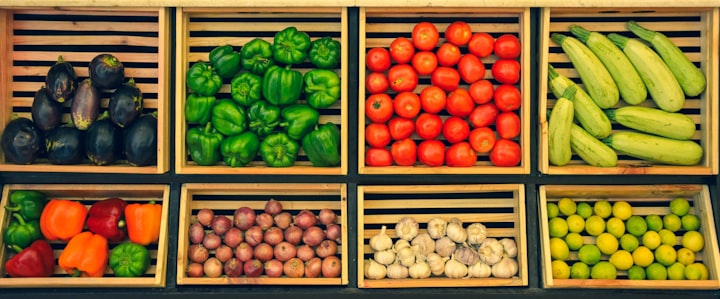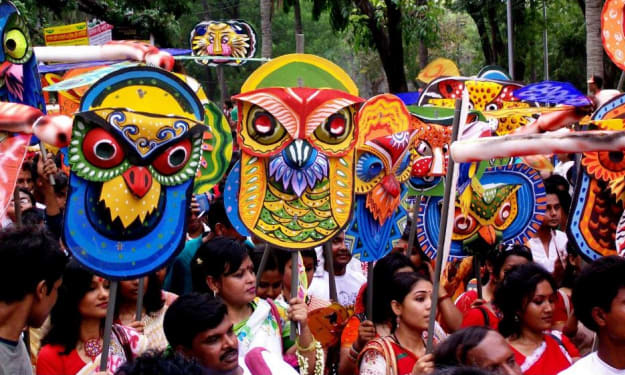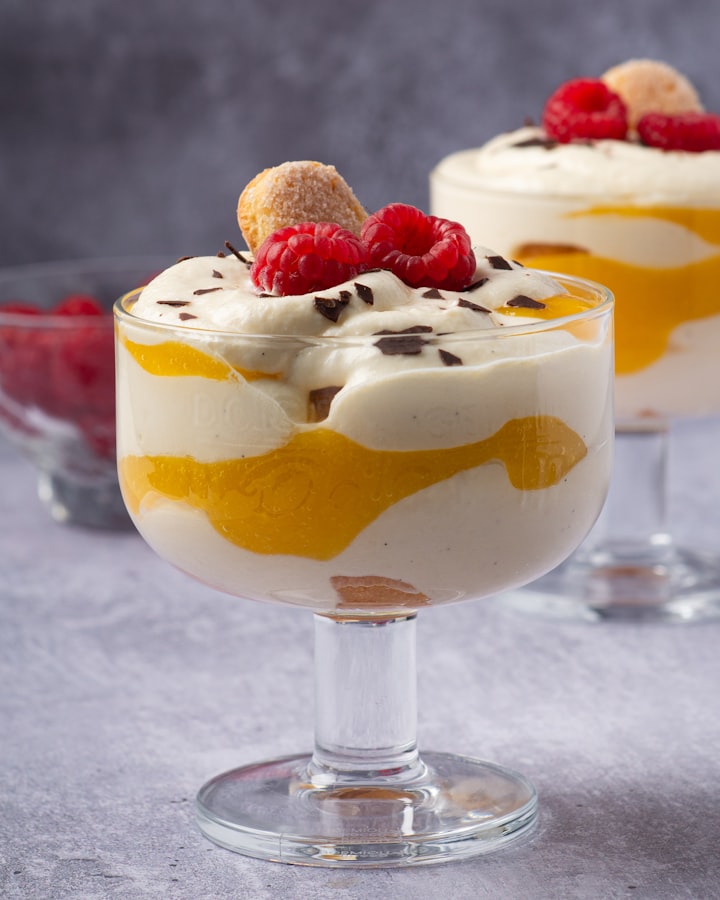Confessions of an Ex-Carnivore
And how I gave up meat for good

Growing up I never once ate a vegetable. Granted, my mother couldn’t cook so my introduction to vegetables consisted of a frozen block of welfare rations thrown into a boiling pot of water. I was repulsed by the rubbery texture and lack of seasonings to counteract the freezer burn so, quite honestly, I just assumed that this is what vegetables tasted like. And never would I subject myself to such gag-inducing torture ever again.
This inner narrative bred me to become a carb crazed carnivore for most of my life. To me, pizza was a complete meal. The tomato sauce counted as a veggie and everything else was a bonus. Plus, it's freaking delicious.
Fear not, as I got older, my palate started to broaden. I began to throw a salad into my routine, and if I was feeling adventurous I might even have a red pepper or some asparagus. Scandalous! Then, I would up getting chronically ill for several years. No surprise, as my diet was absolute garbage for decades but, this was a pivotal turning point for me looking at food as medicine.
Desperate for healing, I looked into alternative healing modalities as I learned that the Western approach to prescribing, I mean "treating" didn't quite work for me. My acupuncturist suggested that I try an elimination diet. Which for me, meant eliminating about 90% of what I had been eating. As I looked at the list of acceptable foods I truly doubted that I could do it for the prescribed two weeks.
Unbeknownst to me, this would be my gateway to heal.
The first couple of days on my new diet were the worst. I had to cut out all of my old comforts which were sweets and carbs which was tough. The most eye opening for me though was realizing how addicted I was to caffeine. On some level, I think I knew because I had been a coffee chugging machine since I was 11. But, nothing could quite prepare me for how utterly sick I felt once I started to withdraw from my coffee habit. Not to be dramatic, but it truly felt like I was dying.
And on some level, I was. The old me that was stuck in this trauma bond with carbs and caffeine was starting to wake up to the fact that when I ate like garbage, I felt like garbage. It was my first stroke of bodily awareness.
I had lived years of my life anxious, jittery, and an award-winning insomniac because I was so hopped up on caffeine. I thought this was a normal part of the human experience; after all, doesn't everyone feel this way? I would come to learn that the coffee was causing me to have intense blood sugar spikes and crashes which impacted not only my mood but my health as well because I wasn't eating consistently.
You see, caffeine suppresses your appetite while also putting your body into fight or flight mode. Which may be great if you're getting ready to run with the bulls; but not so great for your body long term because this stress wreaks havoc on all of the organs in your body.
After my prescribed elimination diet was up, I couldn’t believe how much better I felt. I knew I couldn't go back to my old ways of eating and so, I started to research diets. What felt most comfortable to me, was Paleo. I had already cut out so much of my old diet, that eating meat at every meal felt comfortable.
After being Paleo for a while, I started to get repulsed by meat. Like, dreading meals and gagging at the sight of meat. After all, it was a mainstay for every single meal. I also realized that I really felt like crap. I was hangry all the time even though my eating was consistent. My plan had backfired.
Coincidentally, at the same time, I started seeing a holistic therapist who suggested the best way to heal my PTSD was through a specific semi vegan diet. Meat was replaced by mung beans, and I started to incorporate things like steamed vegetables and sauerkraut into my life. I still ate eggs and could occasionally have a piece of fish for lunch which felt like a good compromise.
After a few days, I felt so much more grounded and level headed. My blood sugar had leveled out and I wasn’t having bouts of hangry-ness anymore. He explained to me how eating meat is like building a shed but to do that you have to take the shed apart piece by piece to put it back together, but by eating vegetables it’s more like having all the pieces there ready to go. It made sense and I felt better. However, I lacked vision.
Like most of us, eating is a habitual addiction that has been passed down through generations. No one in my family really eats vegetables. All of my muscle memory around food included simplistic carbs and usually something fried. I had no reference point to really branch out to try new vegetarian recipes and felt like I was missing out on my old life. After a bit, I caved and went back to meat…with a vengeance.
It wasn’t until I was getting ready for my first retreat to Peru that I revisited going meatless. To prepare for that trip one must completely cleanout from most Western diet mainstays like salt, sugar, flour, meat, spices, citrus, etc. Like anything new, the first two weeks were the most difficult, but after some time I started to not mind having simplicity in food as much. In fact, when I was in Peru, I discovered how delicious vegetarian food could be. The seed was planted but I still wasn’t ready to take the leap to fully incorporate it into my life.
A few months after my return, my partner received a spiritual message that we needed to give up meat and fully detox our bodies. A week later we gave up meat. However, at first, we weren’t very healthy about it. Remember that food muscle memory bit? We were stuck in that loop hardcore. We really struggled to find things that would satisfy our programmed tastebuds and still fall in line with our new lifestyle. Pizza and veggie nachos became our fail-safe dinner options as we struggled to reprogram ourselves to this new way of eating.
After two months, my partner decided he wanted to give fish a try. He cooked it up nice and we each took a bite and almost threw it up. It felt wrong. At that moment we knew we were in this for the long haul and we need to make it work.
We started experimenting with food and finding recipes that worked for us. We began meal prepping so we wouldn’t be stuck with limited take out options. Which worked in our favor because Covid hit and we didn’t get a meal out for 6 months. It forced us into our new life. And honestly, we both feel a million times better than before. We’ve leaned out, I don’t feel like I’m bogged down and heavy after I eat, our digestion is better, and we constantly get compliments on how great our skin and hair look.
So how do you go vegetarian without making the mistakes we did? Here’s how:
1. Set a date for your last meatless day. This sounds corny but it will help you to not fall into the trap of “the diet starts Monday”. For us, we decided Thanksgiving would be our last soiree with meat. This gives yourself a chance to go through the mourning faze as well as an opportunity to clean out the fridge and mentally prepare yourself.
2. Plan your meals. As a meat-eater, you probably didn’t put much thought into your meals because meat is available everywhere. Unless you live in a metro area, finding vegetarian options can be tricky so plan accordingly. Making a menu for the week helps you to stay on track and gives room to experiment with new foods.
3. Experiment. Try new fruits, vegetables, beans, and kinds of rice you’ve never tried before! It’s fun and helps to keep things fresh.
4. Find what works for you. As two ex-carnivores, the first thing we missed was chicken wings. An alternative we found and love are cauliflower wings that we can make at home. A big thing for my partner is the Italian food he grew up on. So for us, experimenting with eggplant dishes has been a game-changer.
5. Red lentil pasta is a game changer! We stopped eating regular wheat pasta and fell in love with the red lentil version. It has protein, it’s not carb-heavy so there’s no post-meal hangover, and there is little guilt because it’s just lentils! Plus, it is so easy to throw a pasta dish together as there are so many different variations you can make. Whether it be with red gravy, veggies and oil, or a vegan alfredo; pasta is so quick and easy when on nights when you don’t really feel like cooking.
6. Always be sprouting. Before I gave up meat I never sprouted a bean in my life. I didn’t even know it was a thing. However, having a bean spouting during the week gives you at least two easy meals that are super easy to throw together. How do you sprout? Pick a dried bean of your choice, rinse them, and put them in a bowl, and completely cover with water. I usually add a splash of apple cider vinegar to help break the beans down and cover them for 12–24 hours. When they’re done, boil them as usual and now you have a protein base for any meal. We like to have beans, rice, and a sauteed veg in the fridge to throw an easy meal together.
7. Have meals in the fridge. This one is key. Making sure you have a meal or two in the fridge at all times will help you stay on track. This gives easy lunch and dinner options, helps to eliminate food waste, and is way less work and worry about cooking. Meal prepping is a gift!
8. Vegetarian or vegan? This is up to you. In the beginning, we were very egg and cheese heavy (hello tastebud programming), but due to my endometriosis, I had to cut out eggs and dairy. It’s really up to you.
9. Keep fruit on hand. As important as having meals in the fridge is, having snacks readily available is equally important. For us this means, having a variety of fruit on hand such as berries that are in season, apples, citrus, etc. so there is always a quick snack at hand.
10. Protein. Most rebuttals I have heard when I tell people that I don’t eat meat is the classic “where do you get your protein from?”. What I have learned is that we have been programmed to think we need massive amounts of protein. Which is completely untrue. When we think back to our ancestors, if they killed a buffalo, it would feed the entire tribe for months. When you think about it, that's nowhere near the meat overload we have today. This is where the Paleo philosophy goes off track. Anyway, I digress. Sources of protein while eating a plant-based diet may surprise you. Mung beans, for example, have 49g of protein in a cup! Broccoli and rice are loaded with protein, as are eggs and cheese if you are incorporating them. Since I no longer eat eggs, and I work out every day, my breakfast has become a veggie smoothie with a scoop of Sun Warrior protein. Yes, protein shakes count! It’s all about creativity!
11. Eating the rainbow. Again, it’s about eating diverse foods to ensure you are getting as many vitamins and nutrients as possible. Plus, there is something so joy-inducing when you are cooking a meal and it is so vibrant with colors. Eat the rainbow.
Now, I’m not a doctor, nor do I play one on tv. I’m not suggesting that everyone give up meat. As someone who never thought they could give up meat, let alone eat a diet rich in vegetables, these steps made the transition easier for me. If you’re considering taking the leap, but feel scared, I feel you and I totally believe in you because if I can do it, I know you can. And you’ll feel better too!
About the Creator
Krista Smith
Krista uses words as her medicine to heal from grief and trauma. She writes from her heart and hopes that her emotional vulnerability will help ignite healing within others.






Comments
There are no comments for this story
Be the first to respond and start the conversation.